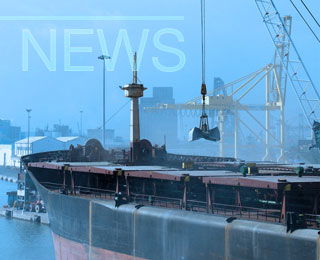The last three months have seen a welcome recovery in the Baltic Dry Index (BDI). On 7 February the index stood at 1097 points, before rising a month later to 1212 points. This was followed by a fall to 948 points by 6 April, after which the index picked up again to peak at 1384 points by 5 May. The last year has seen a positive turnaround in the dry bulk market but overcapacity remains an issue. According to analysts, S&P Global Platts, around 30 per cent of the existing dry bulk fleet needs to disappear if the market is to stage a full recovery. With bunker prices contining to rise and new environmental regulations coming into force, targetting older, less-efficient vessels, aggressive scrapping appears to be the obvious way to deal with the surplus. However, as Platt’s points out, the average age of the dry bulk fleet has already fallen to around nine years and owners face a loss of investment return if they retire vessels too early. With the new order book currently running at around 10 per cent of the existing fleet, another solution will have to be found.
The international shipping industry is also waiting to see what impact the trade war between China and the US could have on demand for the global movement of goods. Following the introduction by the US of a 25 per cent duty on steel imports and 10 per cent tariff on aluminium imports, including from China, on 23 March this year, China responded with a 25 per cent tariff on US soybean imports. Soybeans are an important US agricultural export, the majority of which is usually destined for China. According to Peter Sand, chief shipping analyst at the Baltic and International Maritime Council (BIMCO), the world’s largest international shipping association, “[t]he uncertainty in the shipping industry has already been felt. Anecdotal evidence of fewer US gulf cargoes heading to China is an indicator of this.”
